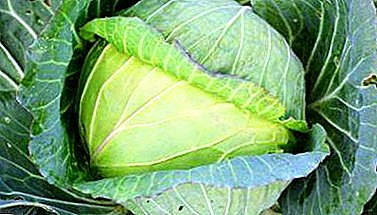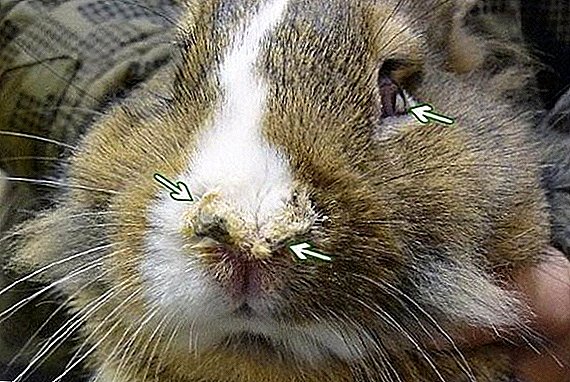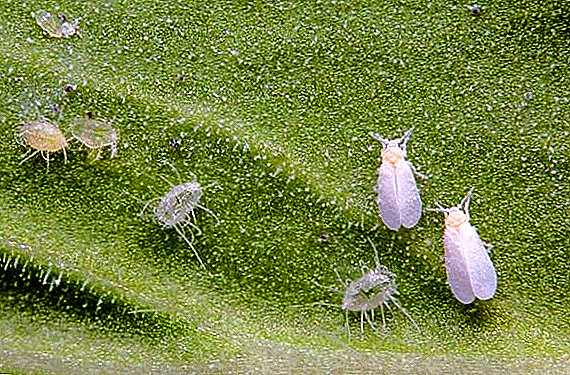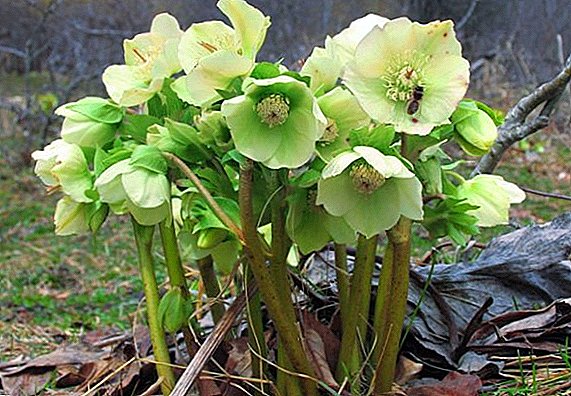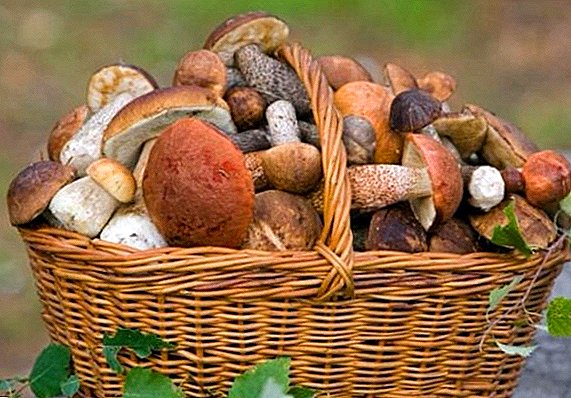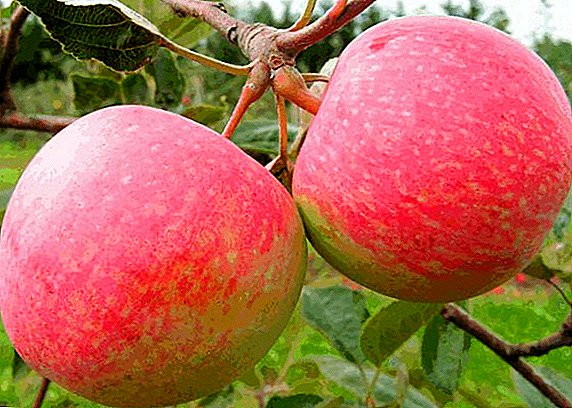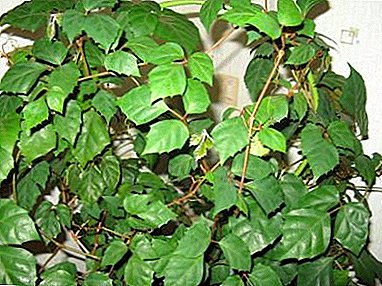
Roitsissus - a frequent guest in the homes of indoor plants.
In the people, this flower is called "home birch" for the original, resembling a birch form, of leaves.
This rather unpretentious plant differs at the same time in a big decorative effect and is suitable for cultivation in wall pots. Externally, Roitzius is a bit like Tetrastigma.
Description
Roitsissus - a plant from the family of grapes, originally from Central Africa.
In its homeland, the flower grows in tropical forests. Its genus includes 10 species.
It has simple or complex (three-part) leaves, green, located on long, flexible stems.
Under natural conditions, shoots reach lengths of up to 6 meters. At home, the maximum length of the stems of roitsissus 3 meters.
Birch blossoms small, false umbrellas. However, in the indoor environment, it almost never blooms.
A photo



Home care
The plant does not require any special care and can grow in any conditions. But in order for the plant to look especially attractive, you should follow some rules for its maintenance and cultivation.
Lighting and temperature
Best of all room birch grows in bright light. But the direct rays of the sun do not like the flower, so it is preferable to keep it on the south or west side. In bright light the leaves will turn pale, and the flower will begin to lose its attractiveness.
TIP: The optimal temperature for roitsissus - 17-25 degrees. In winter, the temperature is desirable not higher than 16 degrees.
However, in the absence of such an opportunity to do this, it is not necessary - the flower will perfectly hold a period of rest in ordinary room conditions at an average temperature.
In the summer, a homely birch tree can be placed on the street in a place where direct sunlight does not fall.
Roitsissus quietly tolerates growing far from the windows. Its hanging shoots in the floor flower stands look very nice, so you can decorate the empty corners of your room.
Watering and humidity
 Frequent and abundant watering is a necessary condition for keeping a birch tree. At the same time, the water is used as soft, since roicissus does not like lime.
Frequent and abundant watering is a necessary condition for keeping a birch tree. At the same time, the water is used as soft, since roicissus does not like lime.
In winter, water the plant should be much less, but only when kept in a cool room.
If the room is hot, the frequency of watering should be the same as in summer.
A native of the rainforest, Roitsissus likes high humidity.
In the summer it should be regularly sprayed. This procedure is also important for cleaning the leaves from dust.
ATTENTION: When determining the norms of irrigation, consider in which pot the birch is grown. Ceramic pots let water through and actively evaporate it, and the plant should be watered more often.
In a plastic pot, there is a risk of overmoistening of the soil, since the water does not evaporate from it. From excessive watering of the soil in such a pot there is a risk of rotting of the root system.
During watering every two weeks, fertilizer should be added to the water. Any universal mix for indoor ornamental plants, sold in retail outlets, will do.
You can feed it with sleeping tea and pharmaceutical chamomile infusion. They also contain some nutrients.
Soil and transplant rules
 After the purchase, the birch tree should be immediately released from the transport substrate and transplanted into a new pot.
After the purchase, the birch tree should be immediately released from the transport substrate and transplanted into a new pot.
If the root system is completely enmeshed with an earthen ball, then pick a pot 5-6 centimeters more than the store.
Unlike other plants, time for acclimatization of roitsissus is not required, it perfectly tolerates a change of conditions and any transplant.
Roitsissus prefers loose nutrient substrates, which are based on turf and deciduous soil. In the mixture, you can add humus, one part into 2 parts of turf and 2 as much leafy ground. For looseness, one part of the sand or peat-sand mixture is also added.
TIP: A transplant is needed annually by a plant at the age of 2-3 years; upon reaching the age of three, it is reduced to once every two years.
During the growth period, the pot is taken 3-4 cm more than the previous one when transplanting roicissus. On necessarily stacked drainage, to prevent the gulf of the plant.
Crown formation
The birch pomp gives a special decorative effect to the bush.
TIP: To form a dense crown and the plant has produced numerous side shoots, it is necessary to regularly nip the longest stems.
Pests and diseases
 This flower is affected by pests extremely rare.
This flower is affected by pests extremely rare.
Perhaps the appearance on it shchitovki, aphids, thrips, spider mites.
They fight with them by washing the foliage with warm water with the addition of laundry soap and insecticide treatment.
Roicissus can be affected in winter. If, with a cool content, to allow overmoistening of the soil, the root system of the plant will strike the fungus.
Due to lack of moisture the leaves begin to turn yellow and dry..
After normalization of watering roitsissus quickly restored. Yellowing of the leaves can also indicate a lack of fertilizer.
Sharply drop foliage Home birch can start from constant falling into drafts or a room with sudden temperature changes.
This often happens when the plant is kept on the balcony with the windows open. Therefore, in cool weather, you should close the balcony at night so that your birch will not freeze.
From waterlogging brown spots appear on leaves. The same symptoms indicate a lack of nitrogen or phosphorus in the soil. Spill roicissus with any nitrogenous fertilizer, and the flower will heal quickly. Remove all affected leaves and stems immediately.
Growing in too dense soil leads to oxygen starvation of flower roots. Signals this twisting and subsequent foliage.
Breeding methods
For breeding roitsissusa there are two ways:
- The division of the bush.
- Cuttings.
Conducted in the spring during transplantation. The plant is neatly divided into two or three parts, depending on the size and planted in separate pots.
Acceptable at any time of the year. Cuttings are cut and planted 3-4 pieces in one container. Blanks should be chosen with three to four buds.
REFERENCE: Rooting occurs at a temperature of 20-22 degrees for 20 days. Roitsissus quickly begins to give new shoots and in a short time turns into a lush, beautiful flower.
Benefit and harm
 Unpretentious roitsissus will be useful to people with the person opposite to the person.
Unpretentious roitsissus will be useful to people with the person opposite to the person.
For those who are literally fixated on bringing cleanliness and order to the house, the plant will help to take a more comfortable attitude towards cleaning and restoring order.
Home flower helps to soften too principled people. A flower that adapts to any conditions helps a person to adapt to adverse living conditions.
He will teach you to be above all material wealth, to be calm about the rush around making money.
As for health, indoor birch helps fight intestinal diseases. It also enhances the immune system and the adaptability of the organism to the adverse effects of the environment.
REFERENCE: No harmful properties were found in the room birch.
Birch is a beautiful view of a houseplant for those housewives who wish to garden their own apartment, but do not have enough time to take care of the flower. The plant with minimal care will delight you with its appearance and give the room a stylish look.


